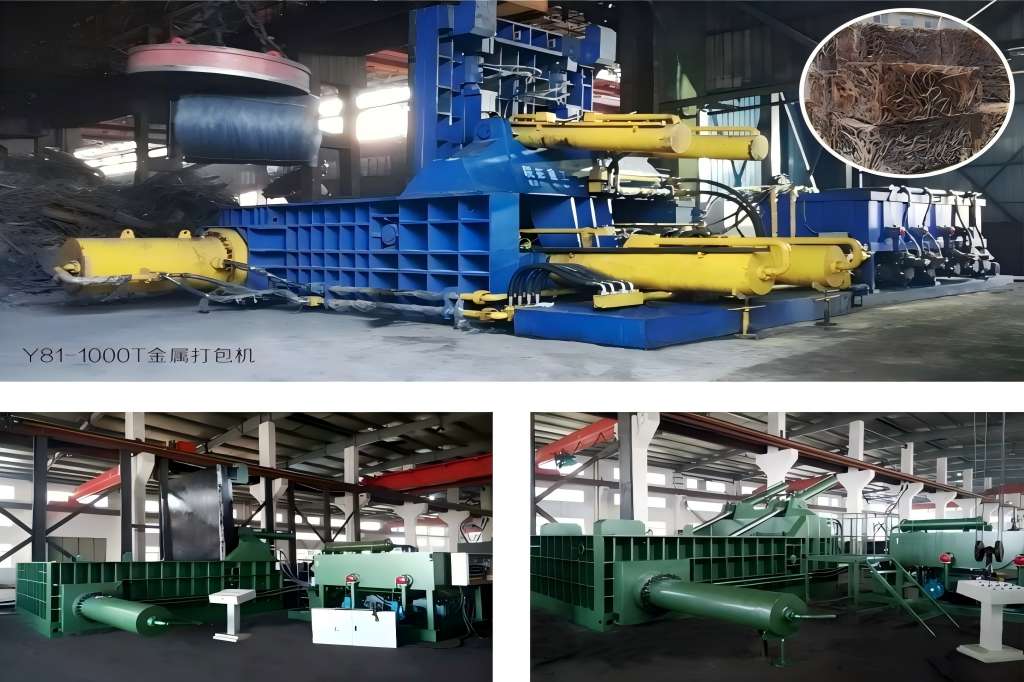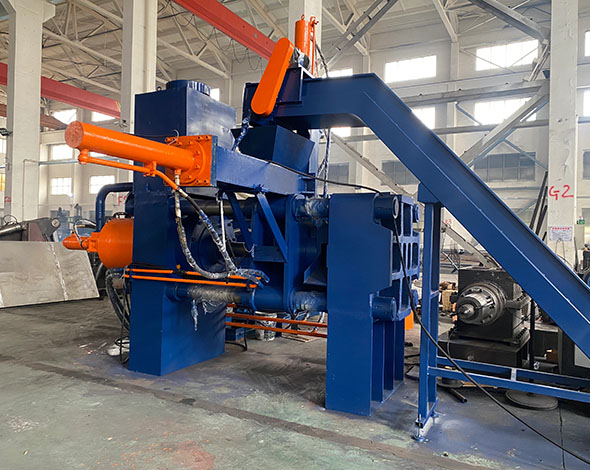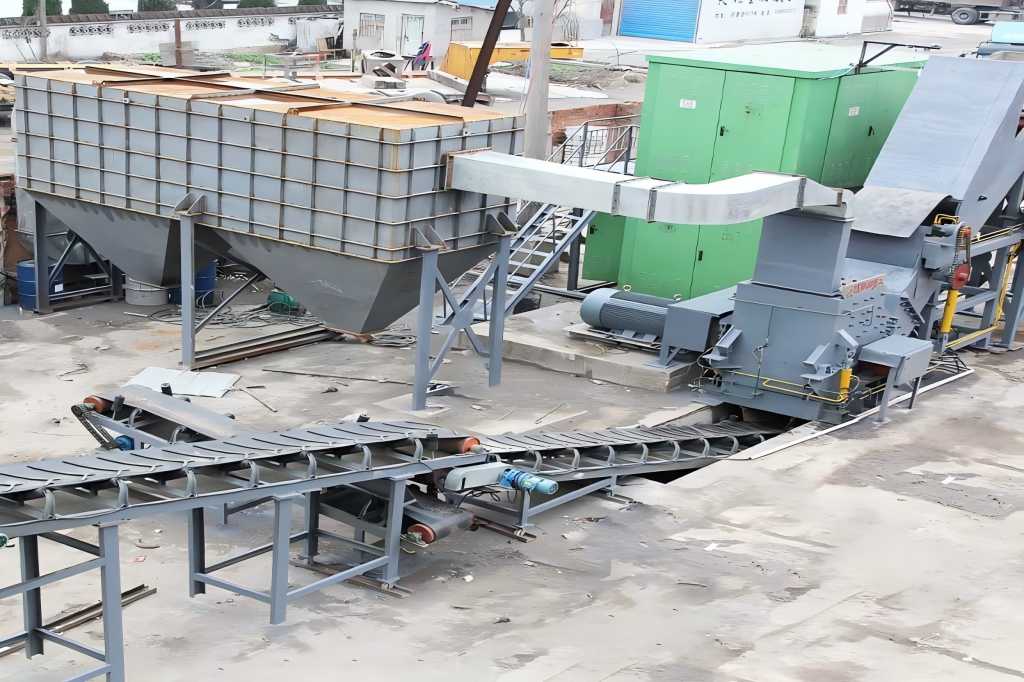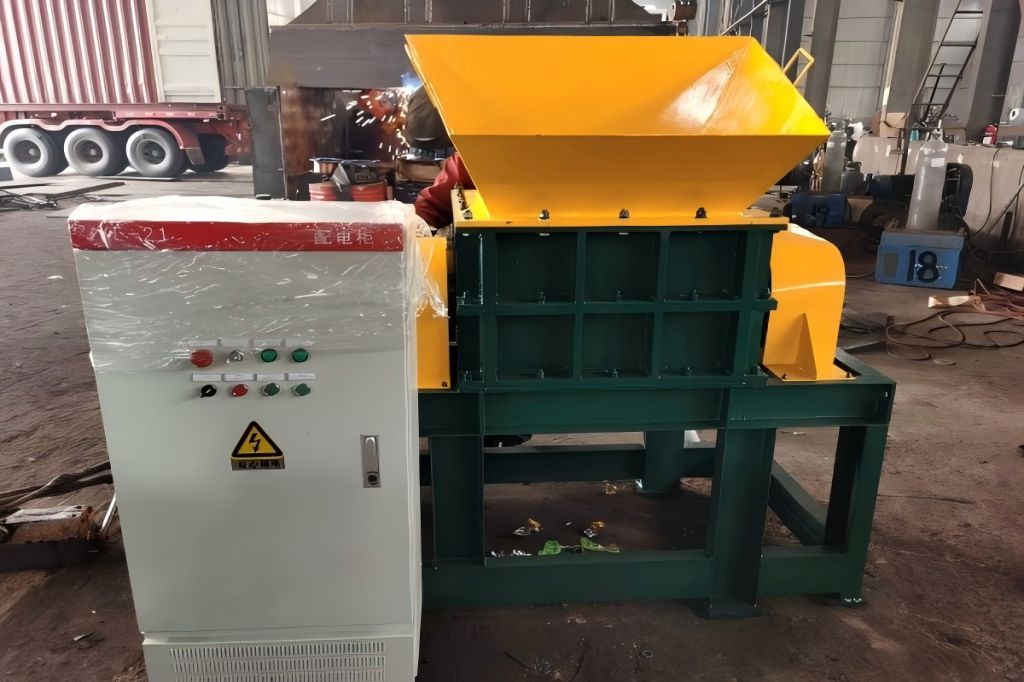In the waste industry,
metal balers play a crucial role by compressing metal scrap into tidy, recyclable bales, enhancing both operational efficiency and environmental sustainability.
This article aims to explore the various factors influencing the cost of metal balers, from their size and functionality to technological features, providing potential buyers with a clear understanding of what to expect financially.
With a focus on enabling informed purchasing decisions, we delve into the complexities of metal baler pricing to navigate this significant investment.
Understanding Metal Balers
There are primarily three types of metal balers, each designed for specific operational scales and types of metal scrap.
Vertical Balers
Vertical balers are the most common and are ideal for small to medium-sized operations. They operate by compressing metal scrap from the top down, making them efficient for processing smaller volumes of metal waste. Their compact size and relatively lower cost make vertical balers popular for facilities with limited space and budget.
Horizontal Balers
Horizontal balers are suited for larger operations with higher volumes of scrap metal. These machines compress waste from the side and are capable of continuous processing, allowing for automated feeding and bale tying. Horizontal balers are more expensive but offer higher efficiency and throughput, making them a worthwhile investment for busy recycling centers.
Alligator Shear Balers
Alligator shear balers, designed for cutting and shearing larger pieces of metal scrap before baling, are specialized equipment for facilities handling a wide variety of metal types and sizes. These balers combine cutting and compressing functionalities, making them versatile but also more costly due to their dual capabilities.
Specialty Balers
In addition to these main types, specialty balers exist for specific metals like aluminum cans or copper wire. These are engineered to handle the unique properties of each metal, ensuring optimal compression and bale integrity, which can affect the recycling value.
Understanding the different types of metal balers and their specific uses is crucial for businesses and recycling facilities looking to invest in the right equipment. The choice of baler significantly impacts both operational efficiency and the financial bottom line, making it essential to consider the volume of metal waste, the types of metals processed, and the available space for the equipment before making a purchase.
Factors Influencing Metal Baler Costs
The cost of a metal baler is not a straightforward figure but rather influenced by a myriad of factors that can significantly affect the final price tag. Understanding these elements is essential for anyone in the market for a metal baler, ensuring that the investment aligns with both operational needs and budget constraints. Here are some of the primary factors that dictate the cost of metal balers:
Size and Capacity
The physical size of a baler and its capacity to process scrap metal are among the most significant determinants of its cost. Larger, high-capacity balers designed for industrial-scale recycling operations command higher prices due to their size, the amount of material they can process, and their efficiency in handling large volumes of metal waste.
Type of Metals Processed
Metal balers are often designed with certain metals in mind, and the type of metal a baler is intended to process can influence its cost. Machines engineered to handle harder metals, such as steel, may require more robust construction and advanced hydraulic systems, thereby increasing their cost compared to balers designed for softer metals like aluminum.
New vs. Used
The decision between purchasing a new or used metal baler can have a significant impact on cost. While new balers come with the latest technology, warranties, and potentially longer lifespans, they also come with a higher price tag. Used balers can offer considerable cost savings, but it’s crucial to consider their condition, remaining lifespan, and any missing features or outdated technology that could affect their efficiency and effectiveness.
Technology and Features
Advancements in technology and additional features can also play a role in the cost of metal balers. Models equipped with automation features, such as automatic tying systems, wireless monitoring, and integration with recycling facility management systems, can increase efficiency and safety but also add to the cost. The level of customization required to tailor the baler to specific operational needs can further influence the price.
Manufacturer and Brand
Finally, the manufacturer and brand of the metal baler can affect its cost. Well-established brands known for their quality, reliability, and after-sales support may command higher prices. However, investing in a reputable brand can result in lower maintenance costs, better performance, and a higher resale value, potentially offsetting the initial purchase price.
In summary, the cost of a metal baler is shaped by a complex interplay of factors, from its size and the type of metals it processes to its technology, brand, and whether it’s new or used. Potential buyers should carefully assess these aspects in light of their specific needs and operational capacities to ensure that their investment in a metal baler is both justified and optimal.
Average Price Range
The average price range for metal balers can vary widely based on previously discussed factors, such as size, capacity, type of metal it’s designed for, technological features, and whether the baler is new or used. To give potential buyers a ballpark idea, here’s a general breakdown:
Small Manual Vertical Balers
Price Range: $1,000 to $5,000
Ideal for small businesses or facilities that deal with lower volumes of metal scrap. These balers are manually operated and have a lower throughput.
Medium to Large Vertical Balers
Price Range: $5,000 to $20,000
Suited for medium-sized operations that require more frequent baling. These machines can handle larger volumes and offer more automation features than their smaller counterparts.
Horizontal Balers
Price Range: $30,000 to over $100,000
Designed for industrial applications with high volumes of scrap metal. The price can significantly increase based on the baler’s size, automation level, and specific features tailored to the operation’s needs.
Alligator Shear Balers
Price Range: $20,000 to $50,000
These specialized balers, which include shearing capabilities for pre-processing scrap before baling, fall into a mid-to-high price range due to their added functionality.
Specialty Balers
Price Range: Prices can vary significantly depending on the specificity and customization of the baler for handling particular types of metal, such as aluminum cans or copper wire.
It’s important to note that these price ranges are indicative and can fluctuate based on market conditions, additional custom features, and the geographic location of the buyer. Furthermore, opting for a used baler can reduce costs, though it’s crucial to consider the potential need for repairs and maintenance.
When considering the purchase of a metal baler, weighing the initial investment against the expected efficiency gains, labor cost savings, and potential revenue from recycled metals is essential. In many cases, the baler can pay for itself over time through these savings and revenues, making it a worthwhile investment for operations looking to optimize their metal recycling processes.
Cost-Benefit Analysis
Conducting a cost-benefit analysis before purchasing a metal baler is crucial for understanding its potential impact on your operations. This analysis helps quantify the baler’s value by comparing the costs associated with its purchase and operation against the benefits it will bring over time. Here are key considerations to factor into this analysis:
Cost Considerations
Initial Purchase Price: The upfront cost of the baler, is influenced by its size, capacity, and features.
Installation and Setup Costs: Expenses related to installing the baler and training staff on its operation.
Maintenance and Repair Costs: Ongoing costs to keep the baler in good working condition, including regular servicing and potential repairs.
Operational Costs: Costs associated with running the baler, such as electricity consumption and hydraulic oil changes.
Benefit Considerations
Increased Efficiency: Metal balers compress scrap into bales, making it easier and more cost-effective to handle, store, and transport. This efficiency can significantly reduce labor and logistics costs.
Revenue from Recycled Metals: Baled metal scrap is more valuable and easier to sell to recyclers or metal processing companies. This can create a steady stream of revenue, offsetting the initial investment in the baler.
Reduced Waste Disposal Costs: By compacting metal scrap, businesses can lower their waste disposal fees, as they will be sending less material to landfills.
Environmental Compliance: Using a metal baler can help companies comply with environmental regulations by reducing waste and promoting recycling, potentially avoiding fines and enhancing the company’s green credentials.
Conducting the Analysis
To conduct the cost-benefit analysis, calculate the total estimated costs and compare them against the quantified benefits over a specific period, such as five or ten years. This comparison can be made using a net present value (NPV) calculation or a return on investment (ROI) analysis. The goal is to determine if the benefits outweigh the costs and how long it will take for the baler to pay for itself.
For many businesses, especially those generating a significant amount of scrap metal, the long-term benefits of owning a metal baler far outweigh the initial and operational costs. Improved operational efficiency, additional revenue streams from selling baled scrap, and reduced waste disposal costs all contribute to a strong business case for the investment.
Moreover, the positive environmental impact of recycling metal scrap aligns with growing consumer and regulatory demands for sustainable business practices, adding intangible benefits to the company’s reputation and market position.
Where to Buy Metal Balers
When it comes to purchasing a metal baler, potential buyers have several options, each with its own set of advantages. Understanding where to buy can help you find the best deal, the right machine for your needs, and reliable after-sales support. Here are some primary sources for acquiring metal balers:
Manufacturers
Buying directly from the manufacturer is often the best way to purchase a new metal baler. This option allows buyers to customize their equipment to meet specific operational needs, ensuring that the baler fits seamlessly into their existing processes.
Additionally, purchasing from the manufacturer typically includes comprehensive after-sales support, warranties, and access to original parts and services.
Advantages: Customization options, full warranties, direct support.
Considerations: It may require a higher initial investment compared to other sources.
Industrial Machinery Dealers
Dealers specializing in industrial recycling equipment offer both new and used metal balers. They can provide a wide range of options from different manufacturers and help compare features and prices. Dealers might also offer used equipment that has been inspected and serviced, offering a more budget-friendly alternative without sacrificing quality.
Advantages: Variety of options, potential for lower prices, some level of after-sales support.
Considerations: The quality and condition of used equipment can vary.
Online Marketplaces
Online marketplaces and auction sites can be a good source for finding metal balers, especially for those looking for used equipment.
These platforms offer the opportunity to purchase balers at significantly reduced prices and to find equipment from locations around the world.
Advantages: Potential for significant savings, wide selection.
Considerations: Risk of purchasing equipment without thorough inspection, variable quality, and limited after-sales support.
Industry Trade Shows and Auctions
Attending industry trade shows or auctions can provide opportunities to see metal balers in action, meet directly with manufacturers or dealers, and potentially secure deals. Trade shows also offer the advantage of comparing different models and brands in one location.
Advantages: Opportunity to compare various equipment firsthand, potential for discounts or trade show specials.
Considerations: Availability may depend on event schedules, and there’s the potential for impulse buys without thorough research.
Tips for Choosing a Seller
When selecting where to buy a metal baler, consider the following tips to ensure a satisfactory purchase:
Research: Conduct thorough research on the seller’s reputation, customer reviews, and after-sales support.
Inspect: If purchasing used equipment, inspect the baler personally or hire an expert to do so.
Negotiate: Don’t hesitate to negotiate on price, especially for used equipment or when buying directly from manufacturers.
Warranty and Support: Verify the warranty period and what it covers. Confirm the availability of after-sales support and maintenance services.
By carefully considering these options and tips, buyers can make an informed decision on where to purchase a metal baler, balancing cost, quality, and ongoing support to best meet their operational needs.
Conclusion
In sum, a metal baler is a key investment for enhancing recycling efficiency, minimizing waste, and supporting environmental sustainability. Understanding cost influencers, performing a cost-benefit analysis, and exploring purchasing options are essential steps in acquiring the right baler.
Whether buying new or used, from manufacturers or through online platforms, careful research and negotiation ensure a wise investment. Ultimately, the right metal baler not only fits operational needs but also aligns with financial and environmental goals, proving its value far beyond its initial cost.




